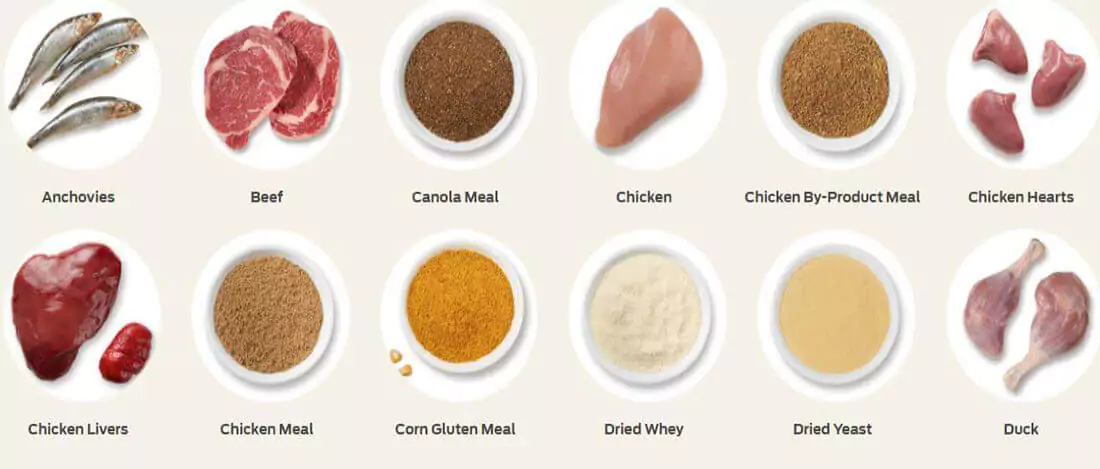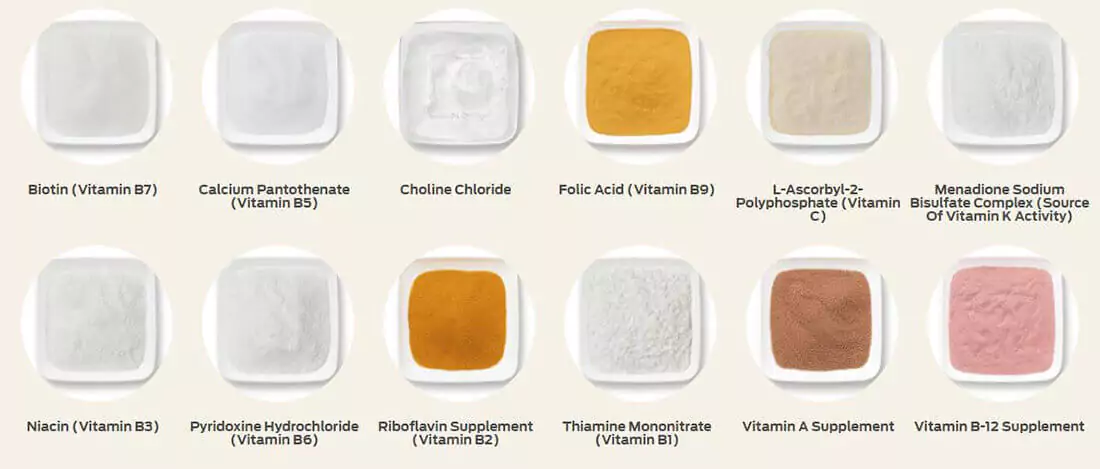Introduction
Have you ever stood in the pet food aisle, stared at the long list of ingredients on a bag of pet food, and felt a little overwhelmed? You are not alone. It can be hard to know what all those words mean. But understanding these ingredients is the key to choosing the best food for your pet’s health. It helps you look past the confusing marketing claims on the front of the bag.
This guide will break down the main components of pet food formulation in simple, easy-to-understand terms. After reading this, you will be able to read that label like a pro. You can feel confident about what you are feeding your furry family member.
The Goal of Formulation: What “Complete and Balanced” Really Means
You will often see the words “complete and balanced” on pet food bags. This is a very important phrase. In the USA, an organization called AAFCO (The Association of American Feed Control Officials) sets the nutritional standards for pet food.
When a food is labeled “complete and balanced,” it means it has all the necessary nutrients. It also has them in the correct ratios. This allows the food to be the only source of a pet’s nutrition for a specific life stage. For example, a food might be “complete and balanced” for a puppy, an adult dog, or a senior cat.

The Building Blocks: Breaking Down Pet Food Ingredients by Nutrient
A complete pet food is made of several key building blocks. Each one has an important job.
1. Protein Sources (The Foundation of the Diet):
Protein is essential for your pet’s body. It helps build and repair their muscles, organs, skin, and coat. Common protein sources include:
- Whole Meats: Like Chicken, Beef, Lamb, or Fish.
- Meat Meals: Like Chicken Meal or Fish Meal. A “meal” is a concentrated protein source. It is made by grinding and drying the meat and bone, which removes the water.
- Plant-Based Proteins: You might also see proteins from plants, such as pea protein or soybean meal, used in some formulas.
2. Carbohydrate Sources (For Energy):
Carbohydrates provide ready-to-use energy for your pet. This fuels their playing, running, and daily life. Common carbohydrate sources are:
- Grains: Like Corn, Rice, Barley, and Oats.
- Grain-Free Sources: Many foods now use Potatoes, Sweet Potatoes, and Peas as their main carbohydrate source.
3. Fats & Oils (For Energy and Health):
Fats are a dense source of energy for pets. More importantly, they provide essential fatty acids. These include Omega-3 and Omega-6. These fatty acids are crucial for a healthy skin and a shiny coat. They also support brain development and can help reduce inflammation. Good sources include:
- Chicken Fat (a common and good source of energy)
- Fish Oil (like salmon oil)
- Flaxseed
- Sunflower Oil
4. Fiber Sources (For Good Digestive Health):
Fiber is important for keeping your pet’s digestive system regular. It helps promote a healthy gut environment. Common fiber sources you might see on a label are:
- Beet Pulp
- Pea Fiber
- Oat Fiber
- Inulin (which is a type of prebiotic fiber that feeds good gut bacteria)
5. Vitamins & Minerals (The Essential Micro-Ingredients):
Vitamins and minerals are crucial for thousands of functions in your pet’s body. They support everything from their immune system to their bone health and eyesight. These are usually added as a carefully measured “premix” to ensure accuracy. Key examples include:
- Vitamin E (which also acts as a natural preservative)
- Taurine (which is absolutely essential for cats)
- Calcium and Phosphorus (for bones and teeth)
- Zinc (for skin health)
Beyond the Basics: Understanding Common Additives & Supplements
Besides the main building blocks, you might see other pet food ingredients on the label.
- Antioxidants (To Keep Food Fresh): These are added to prevent the fats and oils in the food from going bad or rancid. Common natural antioxidants are Mixed Tocopherols (which is a source of Vitamin E) and Rosemary Extract.
- Binders (To Hold Kibble Together): In dry kibble, certain ingredients are needed to help the pellet hold its shape. The starches from pet food ingredients like potatoes or peas often act as natural binders.
- Probiotics (For Gut Health): Some foods add these “good bacteria.” They can help support a healthy digestive system for your pet.
- Joint Supplements (Common in Senior & Large-Breed Foods): In many foods for senior pets or large dog breeds, you might see ingredients like Glucosamine and Chondroitin Sulfate. These are added to help support joint health.
Formulation
Dog Food Formulation
| Ingredient | Function | Percentage Range |
|---|---|---|
| Animal Protein | Provides high-quality protein and amino acids | 18% – 30% |
| Plant Protein | Supplementary protein, supports muscle growth | 5% – 15% |
| Fat | Provides energy, supports skin and coat health | 8% – 15% |
| Fiber | Supports digestion and intestinal health | 2% – 5% |
| Carbohydrates | Provides energy, supports body functions | 30% – 50% |
| Calcium | Supports bone and dental health | 1% – 1.5% |
| Phosphorus | Supports bone health, participates in energy metabolism | 0.7% – 1% |
| Sodium | Regulates fluid balance, maintains electrolytes | 0.2% – 0.5% |
| Vitamin A | Promotes vision and immune system health | 2000 – 5000 IU/kg |
| Vitamin D | Aids calcium absorption, supports bone health | 200 – 400 IU/kg |
| Vitamin E | Antioxidant, protects cells from damage | 50 – 100 IU/kg |
| Omega-3 Fatty Acids | Supports heart and skin health | 0.1% – 0.5% |
| Omega-6 Fatty Acids | Promotes skin and coat health | 1% – 3% |
| Trace Minerals | Supports immune system and metabolism | Added as needed |
| Amino Acids | Promotes growth and cell repair | Added as needed |
Cat Food Formulation
| Ingredient | Function | Percentage Range |
|---|---|---|
| Animal Protein | Provides high-quality protein and amino acids | 30% – 40% |
| Plant Protein | Supplementary protein, supports muscle growth | 5% – 10% |
| Fat | Provides energy, supports skin and coat health | 15% – 30% |
| Fiber | Supports digestion and intestinal health | 1% – 3% |
| Carbohydrates | Provides energy, supports body functions | 10% – 25% |
| Calcium | Supports bone and dental health | 0.8% – 1.2% |
| Phosphorus | Supports bone health, participates in energy metabolism | 0.7% – 1% |
| Sodium | Regulates fluid balance, maintains electrolytes | 0.2% – 0.5% |
| Vitamin A | Promotes vision and immune system health | 2000 – 5000 IU/kg |
| Vitamin D | Aids calcium absorption, supports bone health | 200 – 400 IU/kg |
| Vitamin E | Antioxidant, protects cells from damage | 50 – 100 IU/kg |
| Omega-3 Fatty Acids | Supports heart and skin health | 0.1% – 0.5% |
| Omega-6 Fatty Acids | Promotes skin and coat health | 1% – 3% |
| Taurine | Essential amino acid for heart and eye health | 0.1% – 0.2% |
| Trace Minerals | Supports immune system and metabolism | Added as needed |
| Amino Acids | Promotes growth and cell repair | Added as needed |
Dog Food Recipe: Chicken & Veggie Mix
You’ll need:
- 2 cups cooked chicken (no bones!)
- 1 cup cooked brown rice
- 1 cup steamed carrots and peas
- 2 tbsp plain chicken broth (no onions or garlic!)
- 1 tbsp fish oil
Steps:
- Toss the chicken, rice, and veggies in a big bowl.
- Pour in the broth to keep it juicy.
- Add fish oil for a shiny coat.
Serving size: 1 cup per 20 lbs of dog, daily.
Nutrition per cup: 26g protein, 9g fat, 21g carbs, 250 calories.
Cat Food Recipe: Tuna & Salmon Bites
You’ll need:
- 1 cup drained tuna (in water)
- ½ cup cooked salmon (no bones!)
- ¼ cup plain pumpkin puree
- 1 tsp sunflower oil
- ¼ tsp taurine powder (a must for cats!)
Steps:
- Mix tuna and salmon in a bowl.
- Stir in pumpkin for easy digestion.
- Add sunflower oil for soft fur.
- Sprinkle taurine powder and mix well.
Serving size: ½ cup per 10 lbs of cat, daily.
Nutrition per cup: 28g protein, 10g fat, 4g carbs, 200 calories.

How to Make Pet Food at Home
Step 1: Know What Pets Need
- Dogs: They need a complete and balanced diet with protein (chicken, beef), carbs (rice, sweet potatoes), and healthy fats (fish oil). Puppies and active dogs need extra calories!
- Cats: They’re meat-lovers! Their food must have animal protein, taurine (for their heart), and vitamins like A and D.
Step 2: Pick the Best Pet Food Formulation Ingredients
- Proteins: Fresh chicken, beef, or fish (skip processed meats!).
- Carbs: Brown rice, oats, or sweet potatoes for energy.
- Fats: Fish oil or flaxseed for a glossy coat.
- Veggies: Carrots, spinach, or pumpkin for vitamins.
Step 3: Try These Easy Pet Food Recipes
For Dogs:
- Beef & Sweet Potato: Cook ground beef and mashed sweet potatoes. Mix with spinach and flaxseed oil.
- Turkey & Quinoa (for allergies): Swap beef for turkey and rice for quinoa.
For Cats:
- Salmon & Pumpkin: Blend cooked salmon with pumpkin and a taurine supplement.
- Chicken & Liver: Mix cooked chicken, liver, and green beans.

